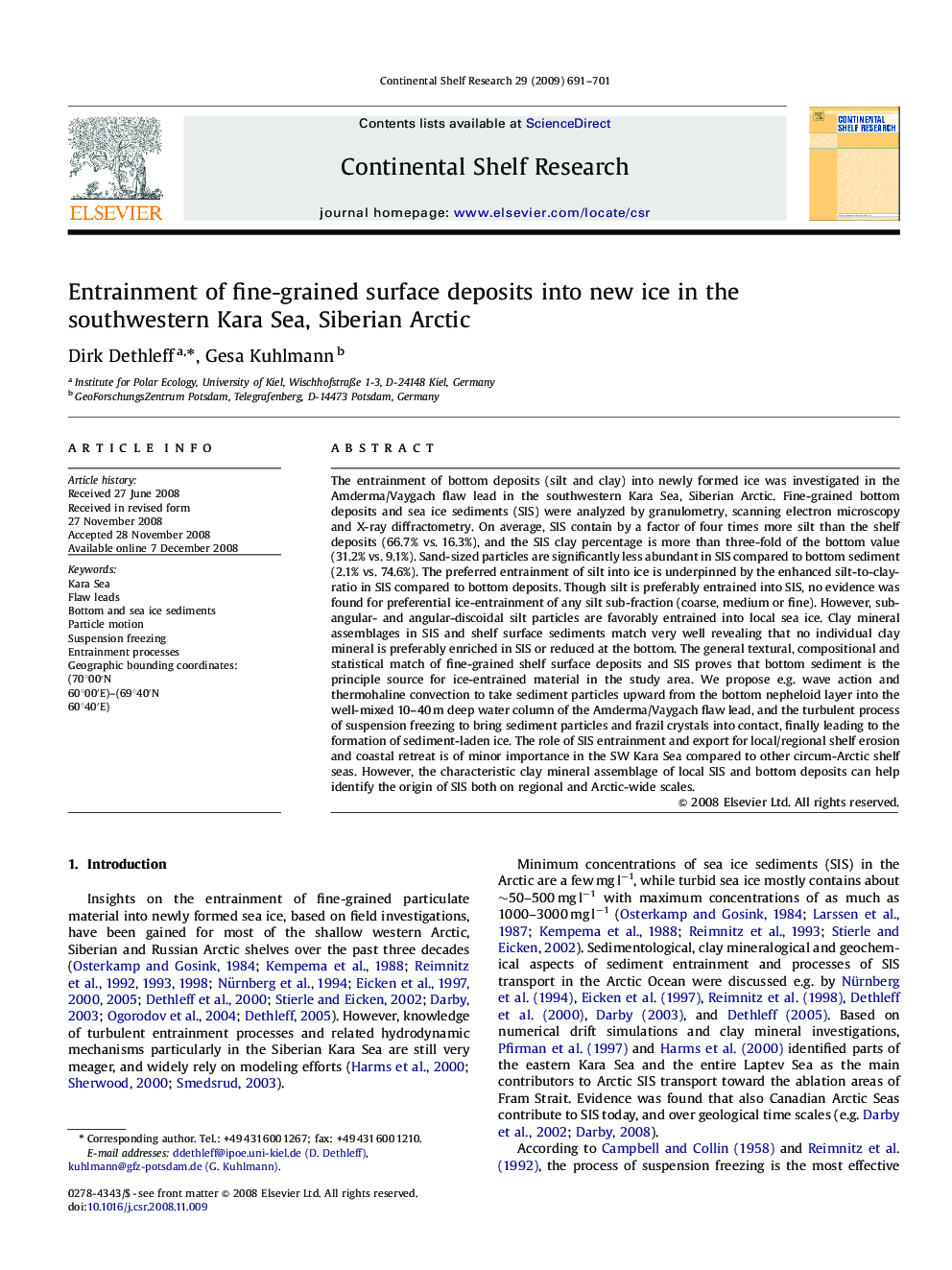| کد مقاله | کد نشریه | سال انتشار | مقاله انگلیسی | نسخه تمام متن |
|---|---|---|---|---|
| 4533555 | 1325200 | 2009 | 11 صفحه PDF | دانلود رایگان |

The entrainment of bottom deposits (silt and clay) into newly formed ice was investigated in the Amderma/Vaygach flaw lead in the southwestern Kara Sea, Siberian Arctic. Fine-grained bottom deposits and sea ice sediments (SIS) were analyzed by granulometry, scanning electron microscopy and X-ray diffractometry. On average, SIS contain by a factor of four times more silt than the shelf deposits (66.7% vs. 16.3%), and the SIS clay percentage is more than three-fold of the bottom value (31.2% vs. 9.1%). Sand-sized particles are significantly less abundant in SIS compared to bottom sediment (2.1% vs. 74.6%). The preferred entrainment of silt into ice is underpinned by the enhanced silt-to-clay-ratio in SIS compared to bottom deposits. Though silt is preferably entrained into SIS, no evidence was found for preferential ice-entrainment of any silt sub-fraction (coarse, medium or fine). However, sub-angular- and angular-discoidal silt particles are favorably entrained into local sea ice. Clay mineral assemblages in SIS and shelf surface sediments match very well revealing that no individual clay mineral is preferably enriched in SIS or reduced at the bottom. The general textural, compositional and statistical match of fine-grained shelf surface deposits and SIS proves that bottom sediment is the principle source for ice-entrained material in the study area. We propose e.g. wave action and thermohaline convection to take sediment particles upward from the bottom nepheloid layer into the well-mixed 10–40 m deep water column of the Amderma/Vaygach flaw lead, and the turbulent process of suspension freezing to bring sediment particles and frazil crystals into contact, finally leading to the formation of sediment-laden ice. The role of SIS entrainment and export for local/regional shelf erosion and coastal retreat is of minor importance in the SW Kara Sea compared to other circum-Arctic shelf seas. However, the characteristic clay mineral assemblage of local SIS and bottom deposits can help identify the origin of SIS both on regional and Arctic-wide scales.
Journal: Continental Shelf Research - Volume 29, Issue 4, 15 March 2009, Pages 691–701